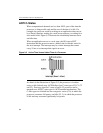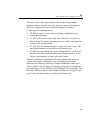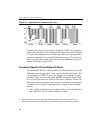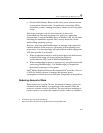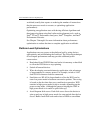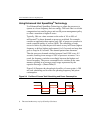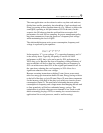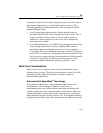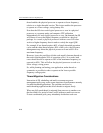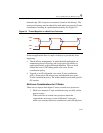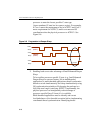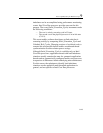
IA-32 Intel® Architecture Optimization
9-12
Using Enhanced Intel SpeedStep
®
Technology
Use Enhanced Intel SpeedStep Technology to adjust the processor to
operate at a lower frequency and save energy. The basic idea is to divide
computations into smaller pieces and use OS power management policy
to effect a transition to higher P-states.
Typically, OSs use a time constant on the order of 10s to 100s of
milliseconds
6
to detect demand on processor workload. For example,
consider an application that requires only 50% of processor resources to
reach a required quality of service (QOS). The scheduling of tasks
occurs in such a way that the processor needs to stay in P0 state (highest
frequency to deliver highest performance) for 0.5 seconds and may then
goes to sleep for 0.5 seconds. The demand pattern then alternates.
Thus the processor demand switches between 0 and 100% every 0.5
seconds, resulting in an average of 50% of processor resources. As a
result, the frequency switches accordingly between the highest and
lowest frequency. The power consumption also switches in the same
manner, resulting in an average power usage represented by the
equation Paverage = (Pmax+Pmin)/2.
Figure 9-4 illustrates the chronological profiles of coarse-grain (> 300
ms) task scheduling and its effect on operating frequency and power
consumption.
6. The actual number may vary by OS and by OS release.
Figure 9-4 Profiles of Coarse Task Scheduling and Power Consumption
CPU demand
Average power
Frequency
& Power



